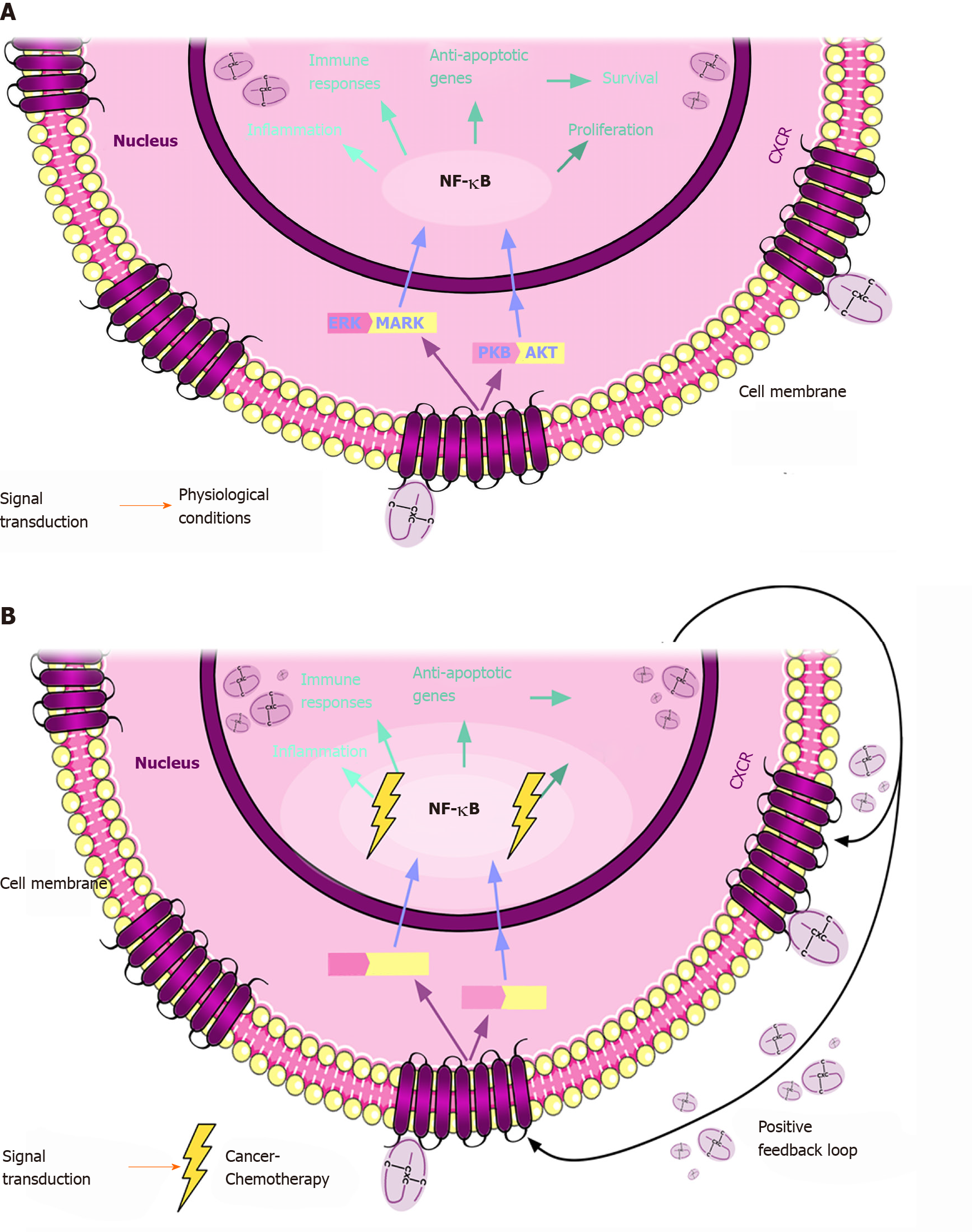Copyright
©The Author(s) 2018.
World J Gastroenterol. Nov 14, 2018; 24(42): 4738-4749
Published online Nov 14, 2018. doi: 10.3748/wjg.v24.i42.4738
Published online Nov 14, 2018. doi: 10.3748/wjg.v24.i42.4738
Figure 1 CXCL and CXCR regulatory mechanisms.
Figure 1 illustrates CXCL binding to the CXCR located at the cellular membrane, internalizing and transducing the signal into the nucleus. CXCR internalization is usually followed by degradation or recycling to the plasma membrane.
Figure 2 CXCL and CXCR network in physiological and cancer conditions.
A: The binding of CXCL to CXCR triggers the activation of signaling pathways, such as PKB/AKT and ERK/MAPK. Both pathways share NF-κB as a downstream factor which, in the nucleus, promotes the transcription of the CXCLs. These pathways maintain the physiologic conditions inside the cell. B: In a cancer cell exposed to chemotherapy, the situation is different. The chemotherapeutic treatment promotes the hyperactivation of these pathways. As a result, the CXCLs are also more abundant, promoting an autocrine response and, further, a positive feedback loop. This response results in pathological processes, such as tumor growth and metastasis, and in resistance to anticancer treatments. PKB: Protein kinase B; ERK: Extracellular signal-regulated kinases; MAPK: Mitogen-activated protein kinase; NF-κB: Nuclear factor κB.
- Citation: Heras SCDL, Martínez-Balibrea E. CXC family of chemokines as prognostic or predictive biomarkers and possible drug targets in colorectal cancer. World J Gastroenterol 2018; 24(42): 4738-4749
- URL: https://www.wjgnet.com/1007-9327/full/v24/i42/4738.htm
- DOI: https://dx.doi.org/10.3748/wjg.v24.i42.4738










